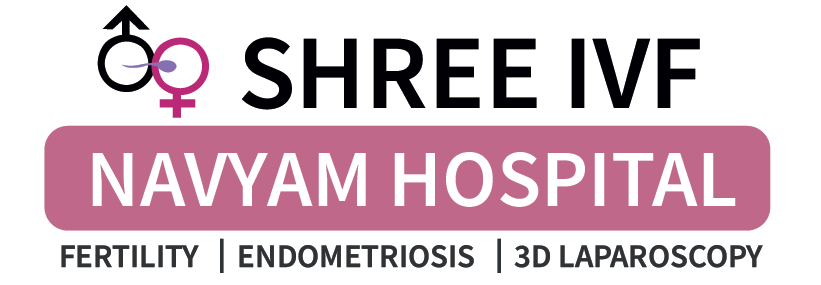
Inguinal Endometriosis is a rare subtype of Endometriosis, which falls under the broader category of Deep Endometriosis. This condition typically manifests in the Inguinal Canal, a passage in the lower anterior abdominal wall through which certain vessels and nerves pass.
🌿 Inguinal Endometriosis: Symptoms, Diagnosis, and Treatment
✅ What is Inguinal Endometriosis?
Inguinal endometriosis is a rare form of endometriosis where endometrial-like tissue grows in the inguinal region, which is located in the groin area.
This condition accounts for less than 0.5% of all endometriosis cases, making it exceptionally uncommon.
It often presents as a painful or tender mass in the groin, particularly cyclic in nature, worsening around menstruation.
Inguinal endometriosis may be primary (spontaneous) or secondary due to surgical procedures, such as a cesarean section or pelvic surgery.
🔎 Causes and Risk Factors
The exact cause of inguinal endometriosis is not fully understood, but several mechanisms may contribute to its development:
✅ 1. Retrograde Menstruation:
- Menstrual blood containing endometrial cells flows backward into the pelvic cavity.
- The cells can migrate to the inguinal canal through the lymphatic or circulatory system.
✅ 2. Direct Seeding from Previous Surgery:
- Pelvic or abdominal surgeries, such as a C-section, may inadvertently implant endometrial cells into the inguinal area.
- This can result in secondary inguinal endometriosis.
✅ 3. Lymphatic or Hematogenous Spread:
- Endometrial cells may travel through the blood or lymphatic system and settle in the groin region.
✅ 4. Congenital Factors:
- Some theories suggest embryonic remnants or abnormal cell migration during fetal development may contribute.
✅ 5. Hormonal Influence:
- The condition is estrogen-dependent, making hormonal fluctuations a contributing factor.
🔥 Symptoms of Inguinal Endometriosis
The symptoms of inguinal endometriosis are often cyclical, with pain and discomfort intensifying during menstruation.
Common symptoms include:
✅ 1. Inguinal Pain or Discomfort:
- Sharp or dull pain in the groin area.
- Worsens before or during menstruation.
- Pain may radiate to the lower abdomen, thigh, or back.
✅ 2. Inguinal Mass or Lump:
- Tender, firm, or nodular mass in the groin region.
- The mass may increase in size during menstruation.
✅ 3. Cyclical Swelling:
- Swelling in the groin area, especially during the menstrual cycle.
- May be accompanied by tenderness or discomfort.
✅ 4. Pelvic or Abdominal Pain:
- Some patients with pelvic endometriosis may also experience concurrent pelvic pain.
✅ 5. Mobility Issues:
- In severe cases, the pain may cause difficulty walking or moving comfortably.
✅ 6. Menstrual Irregularities:
- Heavy or painful periods may accompany the groin symptoms.
🔍 Diagnosis of Inguinal Endometriosis
Diagnosing inguinal endometriosis involves a combination of clinical evaluation, imaging, and biopsy.
✅ 1. Medical History and Physical Examination:
- Review of menstrual symptoms, previous surgeries, and pain patterns.
- Palpation of the inguinal area to check for masses or tenderness.
✅ 2. Ultrasound (USG):
- First-line imaging to detect masses or nodules.
- May reveal hypoechoic or cystic lesions in the inguinal region.
✅ 3. Magnetic Resonance Imaging (MRI):
- Gold standard for visualizing endometriotic lesions.
- Detects deep-seated endometriosis and extrapelvic infiltration.
✅ 4. Fine Needle Aspiration (FNA) or Biopsy:
- A biopsy of the inguinal mass confirms the presence of endometrial tissue.
- Helps rule out inguinal hernias, lipomas, or tumors.
✅ 5. Laparoscopy:
- Minimally invasive surgery allows direct visualization and excision of lesions.
- Useful for concurrent pelvic and inguinal endometriosis.
💊 Treatment Options for Inguinal Endometriosis
The treatment for inguinal endometriosis aims to:
- Alleviate pain and inflammation.
- Reduce lesion growth.
- Prevent recurrence.
- Enhance quality of life.
✅ 1. Medical Management:
- Hormonal Therapy:
- GnRH agonists (leuprolide, goserelin) to reduce estrogen production and shrink endometriotic tissue.
- Progestins (dienogest, norethindrone) to suppress endometrial growth.
- Combined oral contraceptives (COCs) to regulate menstrual cycles.
- Pain Management:
- NSAIDs (ibuprofen, naproxen) to reduce inflammation and pain.
- Neuropathic pain medications (gabapentin) in severe cases.
✅ 2. Surgical Excision:
- Laparoscopic or open surgery to remove the inguinal endometriotic nodule.
- Complete excision reduces the risk of recurrence.
- Wide excision may be necessary in cases with deep infiltration.
✅ 3. Laparoscopic Surgery for Concurrent Pelvic Endometriosis:
- If pelvic endometriosis is suspected, laparoscopic surgery addresses both conditions simultaneously.
- Removes pelvic and inguinal lesions.
✅ 4. Cosmetic and Functional Reconstruction:
- Plastic surgery may be performed post-excision to restore the appearance of the groin.
- Improves aesthetic and functional outcomes.
✅ 5. Postoperative Hormonal Therapy:
- Reduces the risk of recurrence.
- GnRH agonists or progestins are often prescribed post-surgery.
⚠️ Complications of Inguinal Endometriosis
If left untreated, inguinal endometriosis can lead to:
❗ Chronic Pain:
- Persistent groin pain may affect daily activities.
- Can become debilitating without treatment.
❗ Recurrence:
- Despite surgery, recurrence is possible, especially without postoperative hormonal therapy.
❗ Nerve Involvement:
- Infiltration into nearby nerves can cause neuropathic pain or mobility issues.
❗ Misdiagnosis as Hernia:
- Inguinal endometriosis is often misdiagnosed as an inguinal hernia, delaying proper treatment.
💡 Key Takeaway
Inguinal endometriosis is a rare but painful manifestation of endometriosis, often presenting with groin pain, swelling, and nodules.
Early diagnosis through imaging and biopsy is crucial for effective management.
Treatment typically involves surgical excision combined with hormonal therapy to reduce recurrence and manage symptoms. 🌿


